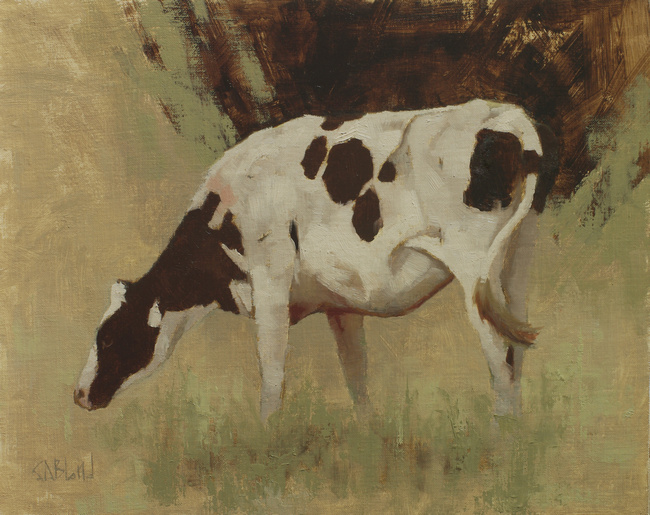Use an Analogous Color Scheme for Black and White Subjects
Simon Bland: 08 Sep 2017

Holstein Grazing. 11x14, oil on linen mounted on panel. 2017.
Animals with black and white coloration are the hardest of all to paint, especially when working from a photograph taken in open sunlight.
For this painting, I used a reference photograph of a cow grazing in the shade.
But that introduced a whole new set of problems: the biggest of which was the blue-green hue in the whites that came from light reflecting off the grass and diffusing through the tree shade. The figure didn't work with an unpainted background. Even worse, it had some difficult cool-to-warm temperature shifts.
After scraping off my first attempt, I looked for another approach.
Looking at some work by painters like Anton Mauve and James Crawhall made me realize that the simplest fix was just to change the color strategy. That consisted of two things:
- Replacing the original, complicated colors with a simple, analogous color scheme. This made the whole painting much easier. It helped me find a simple approach to things like the background and the value range.
- Shifting from a cold color scheme to a warm color scheme. This made the picture look more natural to my eye - I guess it's easy to associate cows with a more earthy palette.
What do I mean by analogous color scheme? I've only used colors that are close to each other on the color wheel—in this case they are all variations of yellows, greens, and earthy browns.
I've gone into this technique in more depth elsewhere, so I'd suggest clicking here for more reading: https://portraitsbysimonbland.com/blog/a-landscape-painting-based-on-analogous-colors/
Simon Bland: 08 Sep 2017